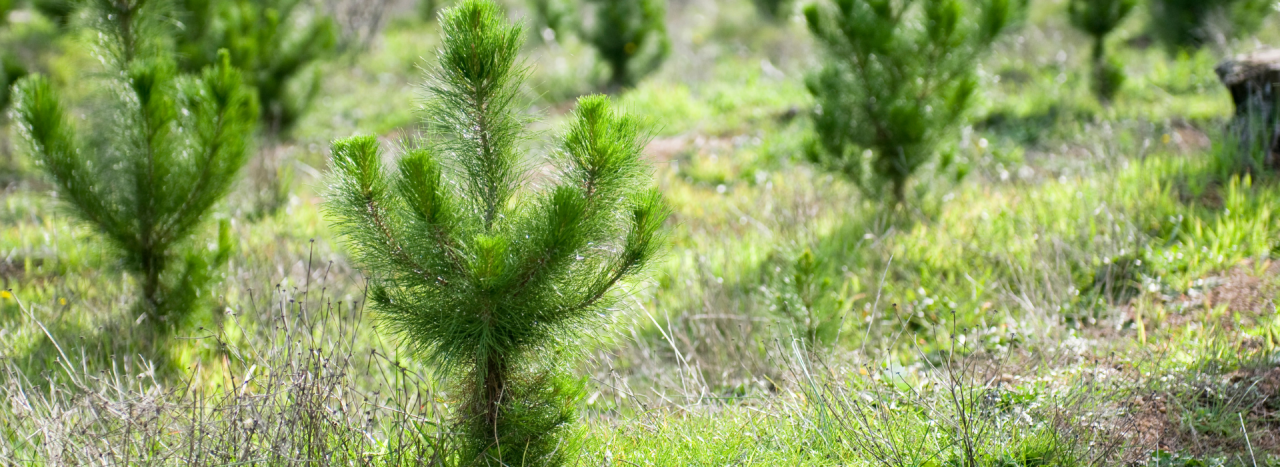Mastercard: When It Comes to Reforestation, One Tree Does Not Fit All
By Maggie Sieger
NORTHAMPTON, MA / ACCESSWIRE / April 24, 2024 / Mastercard
Don't let the old Johnny Appleseed legend fool you. Planting trees is not simply a matter of haphazardly scattering seeds on the ground. Reforesting on a global scale takes deep scientific knowledge, enormous resources and local knowledge - and lots of data.
That has certainly been the case for Mastercard's Priceless Planet Coalition, which aims to restore 100 million trees in a global effort to mitigate climate change. Along with its forest restoration partners, Conservation International and World Resources Institute, the initiative has launched 19 restoration projects across six continents, from the Amazon and Atlantic rainforests of Brazil to the mangrove ecosystems of the Northern Emirates to the tablelands of southeastern Australia.
To find out more about the science behind choosing the places - and the right trees - to plant, the Mastercard Newsroom recently talked with Starry Sprenkle-Hyppolite, senior director of restoration science at Conservation International, and René Zamora-Cristales, senior manager for restoration policy and Initiative 20x20 secretariat director at World Resources Institute.
Restoring trees aids in the capture of carbon, reducing the concentration of greenhouse gases in the atmosphere that fuels global warming. What are the other benefits of restoration?
Sprenkle-Hyppolite: Forests provide many benefits - not only for climate but also for communities. Trees prevent erosion, which is very important, not only for productivity and soil fertility but also for water quality downstream and curbing carbon emissions. Trees also provide shade, protect the soil and reduce evaporation. They make water systems function more naturally again and are critical for ensuring freshwater resources for drinking and irrigation. They work as temperature regulators, too. If you're in a system that used to have shade and then there's no more shade, that [increased heat] can be deadly - even for things underground or underwater.
How do you determine where you should focus your tree-planting efforts?
Sprenkle-Hyppolite: We start with publicly available maps. Many global maps measure the number of households per hectare or people per hectare. Others map out where biodiversity is endangered or measure the potential for trees to absorb carbon in a given reforested area. Then our own scientists overlay each of these maps to identify where they can maximize the benefits. What we've found is that these global data maps sacrifice quality when digging into specific areas. So once we have the global big picture, we still need to reexamine more locally calibrated datasets, which are often different, so it's kind of like repeating the exercise to find the best available data and use it to hone in on the most promising locations.
Zamora-Cristales: The location also has to have local partners with the capacity to absorb the funding and then be able to use that capital for planting but also for long-term monitoring - tracking the trees' survival rate, carbon capture and other benefits. There is also the issue of land tenure. Many of the sites ripe for reforestation have unclear or contested titles. Ideally, the local community has legal title to the land where the trees are planted and governance in place to oversee them. There can't be any conflict about who owns the land, because then someone could come in and take them all down or there could be disagreements about who is responsible for caring for them and maintaining them. The deep relationships our organizations have cultivated with local governments and communities are what has made our restoration successful in the long term. We are looking for people who are interested in having restoration activities on their land. This requires working closely with local organizations, local partners and local people. Yet it's a critical step that is often where a lot of programs fail. You can't ever just hop in and start planting trees.
Can you give me an example of how those relationships have had an impact on a particular project?
Zamora-Cristales: In Guatemala, planting partner Fedecovera has proven to us the importance of getting input from the local people. There, local Q'eqchi' knowledge allows for better planning and ensures tree survival, as the people know to avoid planting trees in areas that are susceptible to disease or where poor soil conditions require treatment before trees can be established. The local knowledge also is important in determining when to start the planting season, as local populations have a deep understanding of the rain season cycles and what is needed for the trees to get the nutrients they need to grow.
Are some trees more popular than others?
Sprenkle-Hyppolite: Trees in the leguminous family - because they are known for growing well and enriching the soil - are good partners to crops and productivity. Erythrina, the pea family, is a genus that we do see a lot of in the tropics and subtropics because it can also support agriculture. Tectona grandis, or teak, is very popular on the Asia-Africa side. It can actually be complicated, because trees that grow well and are popular in one region may be invasive in another. So we have popular American species that people are proposing to plant in Madagascar or Kenya, where it could have negative consequences - choking out native species and destroying food sources for native animals, for example. We have to ask them to please choose another, because this one is invasive in your area. It may actually grow too fast and take over the whole area!
Many tree-planting initiatives end once the seed is in the ground. The Priceless Planet Coalition takes a longer view, deploying a five-year framework for monitoring success. What are you looking at and why is it important?
Sprenkle-Hyppolite: You do have to give a little time for the trees to grow, and the success of tree restoration can't be judged solely by the number of trees planted. They might die soon after. We look at tree survival and growth, freshwater and biodiversity impacts, and work days. Very rarely are we restoring completely empty areas, so we have to have a snapshot of what was already there before we add another 4,000 or 5,000 trees. We do analysis on that baseline state so that we can then analyze our impact two and a half years and five years later. We combine data collected in the field with cutting-edge remote monitoring, and compare the results to control sites that match the original condition of the reforested locations. This holistic framework shows whether these were sound, necessary investments that are achieving their expected impact, and that informs future initiatives, strengthening our efforts and driving progress.
Zamora-Cristales: What's important to remember is that the local communities are the stewards of these forests, not Mastercard, and they keep their own data. They also can use those trees: Fruit trees can help feed local schoolchildren, for example, or can improve soils to increase productivity of crops. The trees ultimately are there for the good of the communities where they are planted.
Originally published by Mastercard

View additional multimedia and more ESG storytelling from Mastercard on 3blmedia.com.
Contact Info:
Spokesperson: Mastercard
Website: https://www.3blmedia.com/profiles/mastercard
Email: info@3blmedia.com
SOURCE: Mastercard
View the original press release on accesswire.com







